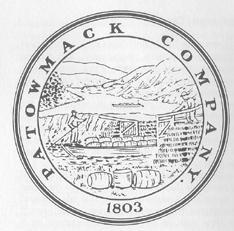We are starting a new blog series today! For those of you that have been on a tour of Lee-Fendall House, you were introduced to the many names and faces that once called our museum home. In this new series we will be exploring deeper into the lives and personal affairs of these owners that are merely names to us. Because this is the first entry in it is only fitting to start with the first owner, Philip Fendall.
Philip Richard Fendall originally bought the property from his cousin “Light Horse” Harry Lee in 1784. Beginning to build his new house was not the only thing Philip was involved in that year. George Washington was starting the Potomac or Patowmack Company that same year. Washington’s idea was to devise a series of canals and locks to make the Potomac River more navigable, with an ultimate goal of connecting the James River, Potomac River, and the Ohio River. Through a series of channels, roads, canals and locks, it would make trade easier between the East and the West. Washington knew the lands in the West very well after surveying it as a young man and navigating it again during the French and Indian War. After exploring areas of western Virginia, Maryland, Pennsylvania and Ohio, again after the Revolutionary War, he needed financial support in the matter and looked to Philip Fendall, “Light Horse” Harry Lee, Thomas Blackburn, and other prominent men in the area for help. The 1785 charter provided “liberal wages” for “one hundred good Hands with provisions and a reasonable Quantity of Spirits.”[1] With the support from Maryland and Virginia, work on the Potomac River was no easy task. There were a series of falls from Georgetown, Great Falls, and Seneca Falls and into Harper’s Ferry. They were also met with rock gardens, rapids, rock ledges, and large boulders. The problems were not just natural features but also physical labor. The Potomac Company had a hard time finding labor because of the physical demands and dangerous conditions.[2] Some location along the river had already been established, helping the Potowmack Company move up river faster. General Light Horse Harry Lee was a huge help, he purchased 40 acres off the Potomac River that became the headquarters of the Potowmack Company. He called it Matildaville, after his late wife. Located by Great Falls, it included a sawmill, gristmill, housing for laborers, boarding houses, a warehouse, and shops. Eventually it was abandoned after the failure of the company. [3] The company fell short of reaching their goal within five years. It took them an additional five years just to finish the canal at Great Falls. They never made it all the way up the Potomac River as they had projected. Great Falls was profitable for a short time but eventually the Potowmack Company was absorbed by the Chesapeake and Ohio Company in 1828. C & O did move forward with George Washington’s original vision and eventually built canals to make it easier for trade to Cumberland, Maryland. Without the support of men like Philip Fendall and Light Horse Harry Lee, Washington’s vision would not have become a reality. The original idea of connecting major water routes was just the start to connecting the East to the West, The beginning of growing the new nation into a strong nation.
-Karen Fossum, Museum Assistant
[1] “The Potomac Company.” George Washington’s Mount Vernon Estate, Museum & Gardens. N.p., n.d. Web. 25 Apr. 2013
[2] “Articles – C&O Canal Association.” Articles – C&O Canal Association. N.p., n.d. Web. 25 Apr. 2013.
[3] “Great Falls Park’s Locks RecallWashington’s Potomac Canal Project.” Great Falls Park’s Locks Recall Washington’s Potomac Canal Project. N.p., n.d. Web. 25 Apr. 2013.

